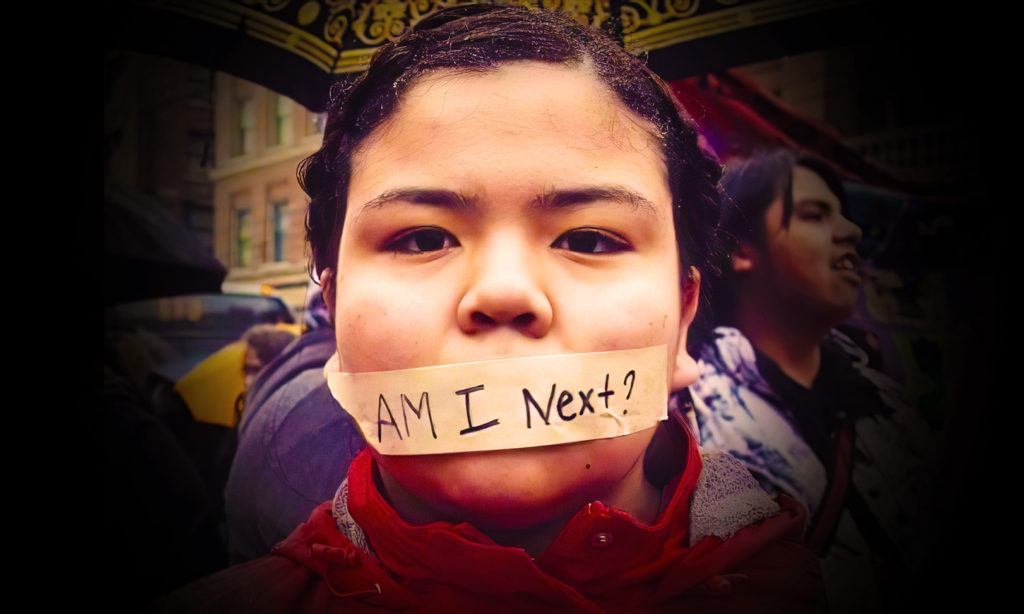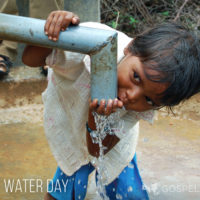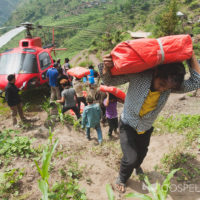WILLS POINT, TX – Gospel for Asia (GFA World) and affiliates Gospel for Asia Canada, founded by KP Yohannan issued a Special Report update authored by Karen Mains on the chilling reality of missing and murdered indigenous women in North America.
In my previous special report for Gospel for Asia titled “100 Million Missing Women,” I unpacked the plight of missing women on a global scale and what governments and NGOs are doing to address the problem. The sheer magnitude of a global issue can make it difficult to internalize the gravity of the situation, so in this update, I drill down on a specific aspect of this problem that exists in North America — one that needs to be brought to the attention of the public.
Sometimes, when exploring complex world problems or catastrophes, such as a hurricane obliterating a whole community, it helps me if I sit down for a few moments and withdraw into silence. Then, I take some time to imagine myself and my family dealing with the same kind of total ruin.
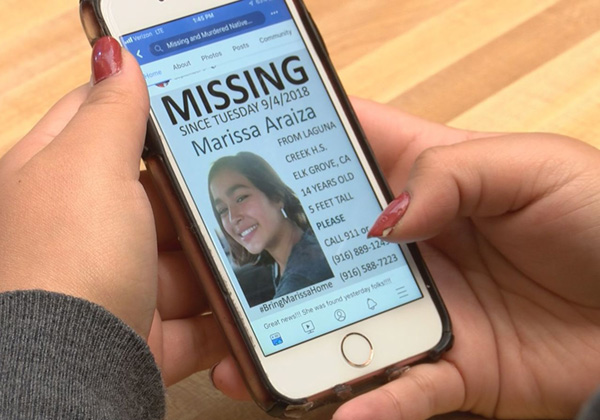
So in order to understand the dynamic of what is termed MMIW (Murdered and Missing Indigenous Women), I took some time to ask myself what this might look like in the community where my husband, David, and I now live.
Our town is a little place, thought unexceptional by many. Recently, I was sharing with friends about the winter banners hanging on main street that say: “One Good Friend Warms Many Months.” Our little town is a basically overlooked western suburb with an immigrant community that grew and thrived because, long ago, Campbell Soup planted a large factory here on the far western edge of other suburbs growing around Chicago. That plant now stretches empty and abandoned, covering several acres, a quiet witness to economic collapse.
For the sake of discussion, let me impose a hypothetical situation upon my unremarkable little town with its population of 27,086 according to 2019 Census Bureau data. The real drama from which I would like to draw a hypothetical is the one that has recently been drawing attention from national reporting agencies and that I mentioned in the opening paragraphs. In certain areas of the United States and Canada, there is a horrific epidemic, which some term a “genocide,” of murdered and missing indigenous women. Let me impose the statistical dilemma, now much-reported.
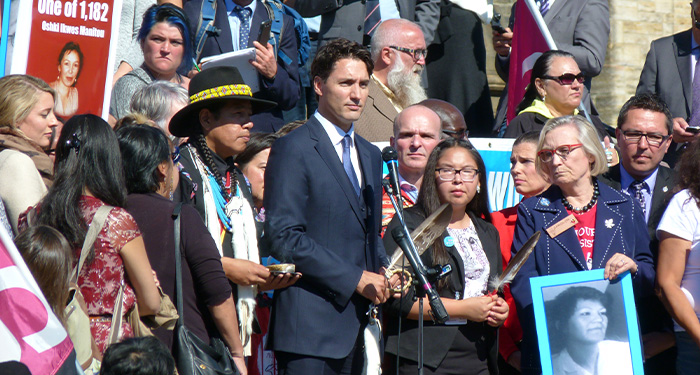
Data on Missing and Murdered Indigenous Women
It was not until 2016 that the government of Canada, under the leadership of Prime Minister Justin Trudeau, established a National Inquiry into Missing and Murdered Indigenous Women and Girls. This was a much-belated response to repeated calls from indigenous leaders, social activists and multiple non-government agencies that were outraged that nothing was being done about the growing problem. The term “indigenous people” includes citizenry from First Nations, Inuit, Métis and Native American communities.
In 2011, Statistics Canada reported the following concerning Aboriginal females:
- It was estimated that from 1997 to 2000, the rate of homicide for Aboriginal females was almost seven times higher than other females.
- Compared to non-indigenous females, they were also “disproportionately affected by all forms of violence.”
- They are also significantly over-represented among female Canadian homicide victims.
- They are far more likely than other women to go missing.
The statistical incidence of MMIW is so high that the Canadian Inquiry reported that indigenous women and girls represented 16 percent of all female homicides in Canada despite representing only 4 percent of the female population.
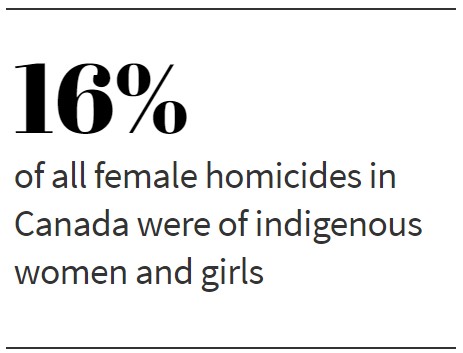 No wonder activists, journalists, women’s-safety advocates and law-enforcement agencies have now become vocal in their concerns about examining the reasons for such violence committed against mothers, daughters, girls, women, teenagers and children in this population demographic. Not only has there finally been alarm and public outcry about a decades-old dilemma, but several excellent documentaries are also available on the Internet for concerned viewers. What If? and Silent No More and other news specials examine various case studies of missing women.
No wonder activists, journalists, women’s-safety advocates and law-enforcement agencies have now become vocal in their concerns about examining the reasons for such violence committed against mothers, daughters, girls, women, teenagers and children in this population demographic. Not only has there finally been alarm and public outcry about a decades-old dilemma, but several excellent documentaries are also available on the Internet for concerned viewers. What If? and Silent No More and other news specials examine various case studies of missing women.
Using My Little Town as a Hypothetical Example
First, because of the natural tendency not to be concerned by social dilemmas unless they touch our own lives, let’s stop and aside set some time to attempt to build some empathetic concern. Let’s use my little town with its total population of 27,086 citizens as a hypothetical example. Some 51.1 percent of the population of this far-western Chicago suburb is Hispanic. That would be 13,841 people of Latino origin.
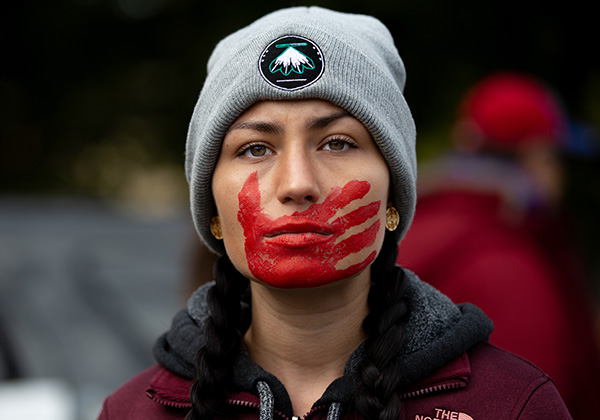
For the sake of discussion, let’s divide that number in half, which would broadly represent the population of females within the Latino population of my little town at some 6,920 women and girls. Then, let’s just grab a murdered- or missing-women statistic—let’s say that 24 percent (which pops up in statistics on MMIW dealing with per-hundred ratios, such as the homicide rate for indigenous women in Canada is 24 percent per 100,000 population) of the MMW in my little town would be almost one-quarter of the estimated 6,920 women and girls who live here. Now let’s expand our acronym from MMIW to MMWG (Murdered and Missing Women and Girls).That would be some 1,661 victims who had gone missing or been discovered murdered. Bodies have been found face down in the branch of the DuPage River, discovered in a shallow grave, found lifeless along the Prairie Path where many of us like to walk and jog. Of course, these deaths or unaccountable absences wouldn’t have happened over the period of any one year, but would be the aggregate of some 10, 15 or 20 years—who knows exactly how many decades?
Yet I am certain—absolutely, determinedly certain—that if this kind of quiet-but-steady mayhem had occurred in our community, even in the Hispanic percentage with its immigrant roots and now large immigrant population, a large cry would have developed, a shout of horror that would proclaim that my little town was a dangerous place for women to move into, live in or be born into. Stay away! Be warned! Do not look at real estate or contact a realtor.
In addition, some 67.6 percent of my fellow towners are white. So, an estimated half of that would be 34 percent white women and girls. One-quarter of 34 percent would be how many missing and murdered? You do the math.
I’m even more certain that if the same demographic had been applied to the white citizenry of my little town, the resultant reaction of distress, concern and investigation would have been tremendous. Wealthy folk who could move would do so. Due to the resulting wave of public outcry, more tax dollars would be assigned to the MMWG disaster. Eventually, the hazardous female environment would be examined by sociologists, written about by PhDs, covered in national news and exploited by carrion-feeders who inevitably make their reputations out of the sensational.
An Imaginative Exercise in Empathetic Fear
The physical facts and data regarding Missing and Murdered Indigenous Women are one thing, but imagine, again—if you will, make a leap of attempted understanding—what it must be like for a woman of any age to live in an environment so hostile to her sex that she knows someone who has gone missing or who has been murdered. A grandmother, an aunt, someone’s own mother, a daughter-in-law, a teenager, a teacher, a little girl has disappeared. A body has been found discarded by a roadside. And no one can say for sure exactly what happened. Not only that, the local police don’t take the problem of missing women seriously. Crime labs are overloaded with other, more-immediate concerns. Those gals will show up some day. Someone will find them. They’ll eventually call home.
Think about the nagging uncertainty that comes from running alone for a last-minute errand to a grocery store. Think about driving somewhere alone at night. Think about a walk home from some school event with friends, then think about those last two blocks you must walk alone. Think about a stranger passing you in a car, slowing, getting a good look, then speeding ahead. Think about an argument in a family, about the gun stored and locked in a cabinet but still there. Think about being at home alone. Think about that phone call from a stranger that reports an accident with a family member being harmed and you needing to come to aid.
When there is high incidence of murdered and missing women in any population, doesn’t the normal, the ordinary and the everyday hold the potential of terror? Doesn’t a world surfeited with sunshine, growing things, seasonal changes, rain on the fields and starlight at night get bent out of emotional shape?
And if you or someone you know has survived an attempted incident of rape or kidnapping or brutality, does the world ever seem safe again?
To be caring citizens, we all need to become proficient in these imaginary exercises in order to create empathy for others in distress. In fact, a hallmark of Christian faith has to do with how much we are willing to enter into the suffering of others, into a suffering that at this time in our lives does not touch our present circumstances. In fact, justice mostly begins with a kind of appalled empathy, then it moves to indignation, finally resulting in activism—the attempt to “do something,” to change a wretched environment, to touch one life that has been wrecked by evil.
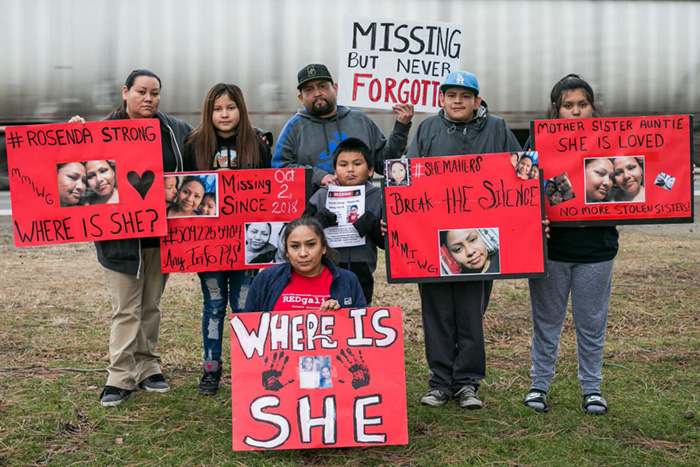
A Personal Experience with One Abused Woman
Decades ago, a friend brought a young woman to our home. She was rough, every cell within her tight with anger, and I was overcome by an inexplicable tenderness for her. Given her unwelcoming exterior appearance, I could only conclude that the Holy Spirit had given me this unaccountable tenderness for someone I never had before met.
“Why did you take me into your home?” she inquired over the phone recently, in that personal attempt we all take as we age to make sense of our previous selves.
“Well, let’s see,” I answered, trying to remember. For the sake of privacy, let’s call this woman, now in her 60s, Jennie. “You needed a place to live, and I needed someone to help with the kids, the house, running errands. And—oh, yes—the love I felt for you was an indication to me that we were supposed to take you in.”
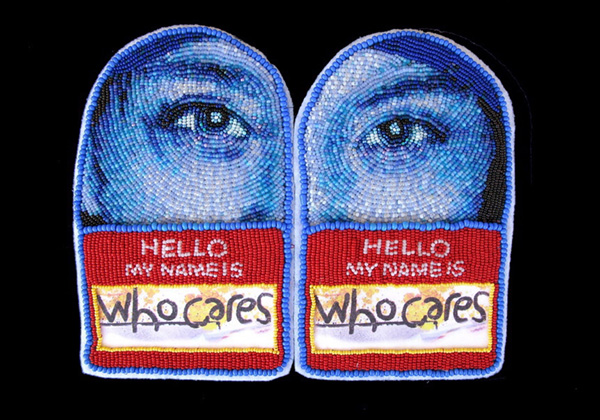
My husband, David, and I (plus our four kids) gave Jennie a safe place, an example of what a pretty healthy family looked like, plus lots and lots and lots of hours listening, answering questions and prayer. At this point, it’s easy to pat oneself on the back and utter a lot of self-congratulation. However, it was Jennie who brought gifts to us. I learned about the capacity of humans to endure untold suffering. I learned about resistance and about the reality of being haunted, if not possessed, by evil strongholds. I learned about the power of love, endurance and eventual gratitude.
Recently, I became ill with an eating disorder, the cause of which a medical team could not identify. Without any intention to do so, I lost 43 pounds. Jennie drove her car 1,000 miles to get to me and stayed for two weeks, pitching in. “I know the routine,” she said upon entering the house. At another time, she flew back across the same 1,000 miles to help me for another two weeks.
You cannot imagine, given our history together, the impact of her prayer on the phone to me. “Dear Lord,” she prayed, her voice still gravelly and sincere, “Karen needs our prayers. I pray that you will bring health back to her again.” I wept on the other end of the line, remembering the once-tight ball of wounded humanity, used again and again by the men in her life from childhood onward to her role as a motorcycle gang moll, this woman who once appeared at my door, brought by a common friend.
And along with the tears, as she prayed, I whispered again and again, Dear Lord … dear Lord … dear Lord. Whenever I get discouraged and begin to question the theology of redemption, in which I am steeped, I remember Jennie.
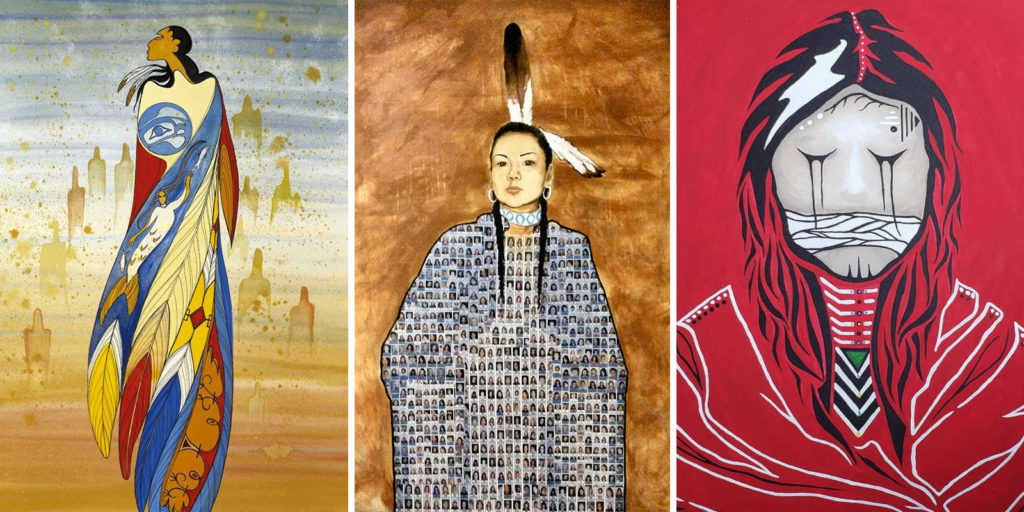
Something Must Be Done
The questions raised by the reality of a large demographic of women of any population facing extinction should impale us on the truth that something serious and radical must be done. However, educating ourselves on the suffering of others requires that we strive to uncover the truths of the whole MMWG landscape.
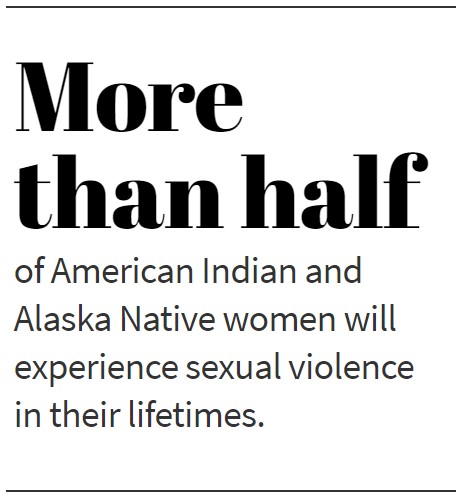 For instance, the first response among analysts as to the cause of high incidence of sexual violation, disappearance or outright murder of females was turned against the nearby males in these indigenous population groups. The consolidated data from some 300 contributing police agencies confirmed this conclusion that some 70 percent of the offenders were of “aboriginal” origin, 25 percent were of non-aboriginal origin, and 5 percent were of unknown ethnicity.
For instance, the first response among analysts as to the cause of high incidence of sexual violation, disappearance or outright murder of females was turned against the nearby males in these indigenous population groups. The consolidated data from some 300 contributing police agencies confirmed this conclusion that some 70 percent of the offenders were of “aboriginal” origin, 25 percent were of non-aboriginal origin, and 5 percent were of unknown ethnicity.
The Native Women’s Association of Canada’s database, which was established in 2005 to track the actual cases of MMIW, concluded that the consolidated data from those 300-some police agencies was in error and gathered from an extremely limited narrow statistical field of only some 32 homicides of indigenous women and girls. The NWCA also determined a bias within the policing community, which appears not to have taken seriously the need to conduct investigations into the actualities of missing women. They preferred instead to consider the problem “a tribal matter” and to conclude that the incidents fell under the purview of local indigenous leadership. Consequently, too many cases had been allowed to “go cold,” and crucial evidence had been lost or discarded. The actual statistical data, such as that gathered by the United States Department of Justice when it focused on the incidence of missing and murdered women among indigenous peoples, determined that this group is, in reality, usually sexually assaulted, stalked and preyed upon by non-natives.
According to the Department of Justice, “More than half of American Indian and Alaska Native women will experience sexual violence in their lifetimes.”
Much of this is due to the fact that jurisdictional issues have historically left legal loopholes leading to non-native rapists and murderers coming to reservations to “hunt” native women with impunity. Simply said, in many jurisdictions, tribal legal systems have historically been confined to territorial boundaries so that tribal jurisprudence cannot exercise sufficient criminal justice over non-tribal members.
The wheels of justice often grind slowly for victims, particularly when the very laws that have been established allow for perpetrators to go unprosecuted. But in recent years, a deliberate attempt at awareness-raising regarding MMIW has finally resulted in a consequent outcry of indignation from news venues, legislators and a recently sensitized public. This has been most heartening.
In 2018 and 2019, legislation began to move through the systems of local governing institutions. Washington, Minnesota and Arizona have taken steps toward building databases that reflect more-accurate statistics on missing and murdered women and girls. The United States declared May 5, 2018, as a national day of awareness. House Bill 2951 of Washington State ordered the state highway patrol to study and report on truths relating to MMIW. And on March 7, 2019, Congress introduced the House of Representatives Bill 1585 to specifically reauthorize the Violence Against Women Act of 1994, which had been eventually repealed. Former Senator Heidi Heitkamp sponsored the bill known as Savanna’s Act to increase cooperation and coordination between “Federal, State, Tribal and local law enforcement agencies,” and this cause has now been reintroduced in 2019 by Senator Lisa Murkowski. The gap created without intra-agency interaction has been analyzed as one of the reasons why murdered and missing indigenous women incidents of violence have fallen through the cracks.
Public Outcry as Activism
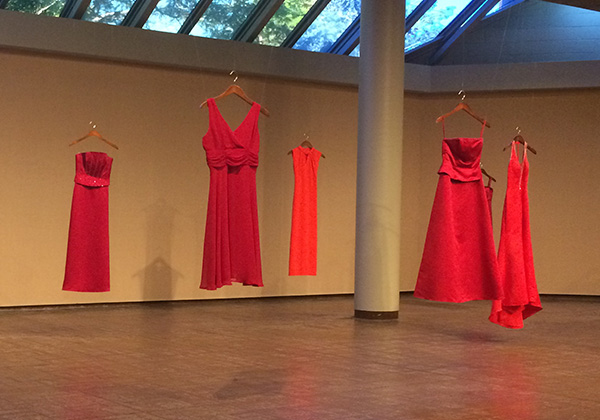
Mostly, what will keep legislative movement and interest alive is public outrage and outcry. A Women’s Memorial March on February 14, Valentine’s Day, was sponsored in downtown Eastside Vancouver, a geographic area notorious for incidents of MMW. These annual marches are intended to highlight the reality of disappeared or murdered women, with family and friends of the missing women, frontline activists and concerned workers stopping at sites pregnant with meaning to memorialize the lives of those who have been lost. The REDress Project is a public art installation where empty red dresses are hung or spread to symbolize those females who are missing or murdered.
In 2015, the body of 15-year-old Tina Fontaine was found murdered and dumped face-down in the Red River in Manitoba. She had been wrapped in a plastic bag that was weighted with stones. The yearly response is a memorial so that people will not forget. Teams of volunteers in canoes and boats search Winnipeg waterways, dragging the waters as a visible demonstration of protest against perpetrators. Running water washes away forensic evidence that leads to conviction.
The Internet is full of faces of the missing. An hour searching these public visual collages will convince any interested party of the numerical incidence of the murdered and the missing. I’ve printed off one of the colored collages of numerous faces and protests and grieving families to help me not forget the hours I’ve spent becoming sensitized to the problem while doing research for this article.
What We Can Do
Perhaps this has become a tiresome reminder: We can do something just by becoming informed.
Those of us untouched by this kind of violence naturally don’t want to know more about it. Information, however, has the possibility of keeping ourselves and our loved ones safe. Of course, we don’t want to see predators behind every tree (or at every stoplight at every lonely road crossing), but we do want to be wise. Pepper spray is a great deterrent. Caution discussions need to be introduced for the extrovert or for the innocent. Self-defense classes need to be taken for the vulnerable, for both men and women.

We can become sensitized.
We can undertake individual or group research studies. Most of us don’t want to delve much into the underbelly of our societies. Too often, we have to force ourselves to read the book, watch the documentary, do the Internet search, make a file of the articles we find in magazines or print off on the home office printer.
If God happens to “drop someone into your lap” (or bring some woman to your front door), be open to that impulse of mercy… if not to bring them into your own family, at least become a listening and encouraging friend. Believe me, if God is in this encounter, you, despite this person’s distress, will be the primary beneficiary.
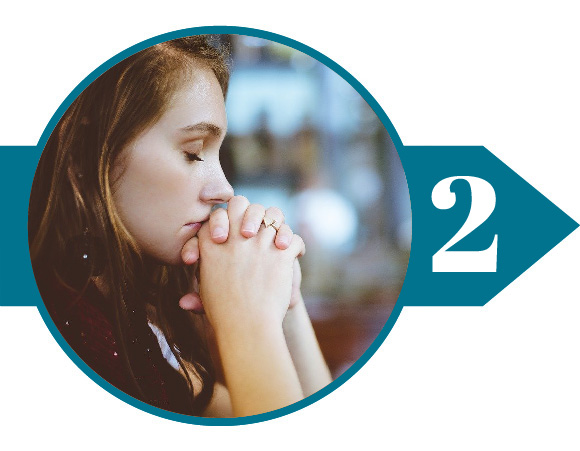
We can pray.
My husband, David, an ordained minister, now in his senior years, is a proficient and organized intercessor. If he says, “I’ll pray for you,” he does. If he says, “I’m praying for you,” he is. His prayer lists are long, and he lingers for loving moments every day over them.
I, however, have always been more spontaneous, praying for folk when I think of them. However, I am convinced that I am not as diligent a pray-er as David. So I’m going to try a new technique. I’m a visual gal: I think a bulletin board of the faces of missing girls and women will stimulate me to keep praying better than a written list in some of the journals I regularly misplace.
The collage of faces and protesters and signs and statistics from one of the Internet pages dedicated to the topic of Missing and Murdered Indigenous Women and Girls will do just fine. Printed off in duplicate, then posted over my writing desk, on the hallway bulletin board, on the pinup board in my office—these should keep me reminded, keep me caring, and warn me not to forget.

We can impose the statistics of violence on each town in which we live.
One day, you too may have the experience (if you haven’t already) of hearing a voice of a woman, a friend you came to love, who survived a horrendous background of abuse, saying on your behalf, “Dear Lord, I pray that you will heal and be near this one I love …”
And then, you too, moved deeply at this evidence of God’s redemptive activity, like me, may find yourself weeping, tears dripping down your cheeks.
To read more news on Missing and Murdered Indigenous Women on MissionsBox News, go here.
This Special Report originally appeared on gfa.org.
Read another Special Report from Gospel for Asia on100 Million Missing Women.
Learn more about the Women Missionaries who are bringing hope as they share Christ’s love to women in Asia.

